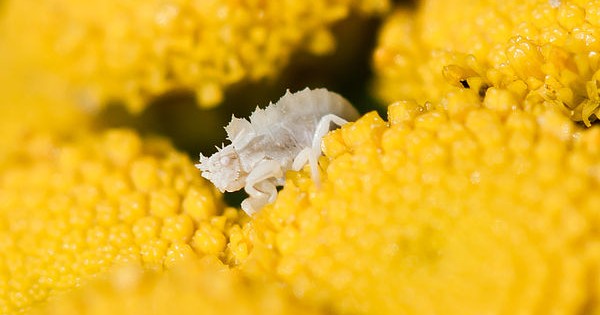
What is a bug? It’s not something you come down with. (A bacterium is not a bug; a virus is certainly not a bug.) A bug is not any old thing that crawls. It’s not a tick, not a mite, not a gnat. A ladybug is not a bug. (It’s a beetle.) Certainly, a butterfly is not a bug. Bug, it turns out, is a technical term: “true bugs” are insects in the order Hemiptera.
The stinkbug is a true bug. So are the squash bug, the toad bug, the red bug, the seed bug, the box elder bug, and the assassin bug. Assassin bugs capture their insect prey with sticky front legs and stab them with their little beaks. There are ambush bugs. Ambush bugs sit like statues on flower petals, waiting, waiting … Waterbugs are true bugs. The bedbug is a bug. Ugh.
Besides being an insect with the usual six legs and three main body divisions—head, thorax, and abdomen—bugs have sucking, beak-like mouth parts and their life cycle occurs in a pattern called “incomplete metamorphosis.” They go from egg to nymph (a baby that looks like a small adult) to adult, with no larva stage.
Slight digression. Many of us confuse the categories of life, and perhaps we couldn’t care less. Life is life. But the more of it we can parse, the more pleasing it all becomes. Taxonomic categories, running from life itself on down: life, domain, kingdom, phylum, class, order, family, genus, species. Bugs are in the phylum Arthropoda, creatures with hard exoskeletons, including lobsters, spiders, and insects. On to class: insects (Insecta) are a class; spiders (Arachnids) are a class; centipedes (Chilopoda) are a class, and so on. Now order: the class Insecta includes moths and butterflies (order Lepidoptera), beetles (order Coleoptera), flies and mosquitoes (order Diptera), bees, wasps, and ants (order Hymenoptera), cicadas and leaf hoppers (order Homoptera, sometimes grouped with bugs), and true bugs (order Hemiptera), among others.
We in Seattle are fortunate to have a bug house at our Woodland Park Zoo. Last Wednesday I made a beeline for that bug house. I was hoping to see one bug, at least. I saw a black widow spider, which arrived from Mexico on a bunch of red grapes. I saw some revolting roaches. I saw a tangle of twigs waving their legs—walking sticks (class Insecta, order Phasmatodea). And yes, there were bugs, giant waterbugs (Abedus herberti) in an aquarium and, in a dry bug cage next to them, white-eyed assassin bugs (Platymeris biguttata) from southern Africa. These assassins were big as the bowl of a teaspoon, with two eyelike white spots on their wing cases.
But why go to the bug house when I can go to my back yard and look in the worm bin where my worms are relishing their rotting repast and the sowbugs are … I have no idea what the sowbugs are doing. There are a lot of them so they must be reproducing. They seem to think this is a sowbug box. Tap one and it has a hard little shell.
But wait. The sowbug is not a bug. The sowbug is not even an insect. The sowbug is a terrestrial crustacean, kin to crab (phylum Arthropoda, class Crustacea, order Isopoda). Life is complicated. It has so many different forms. You could not learn them in a hundred lifetimes. This bugs me.

